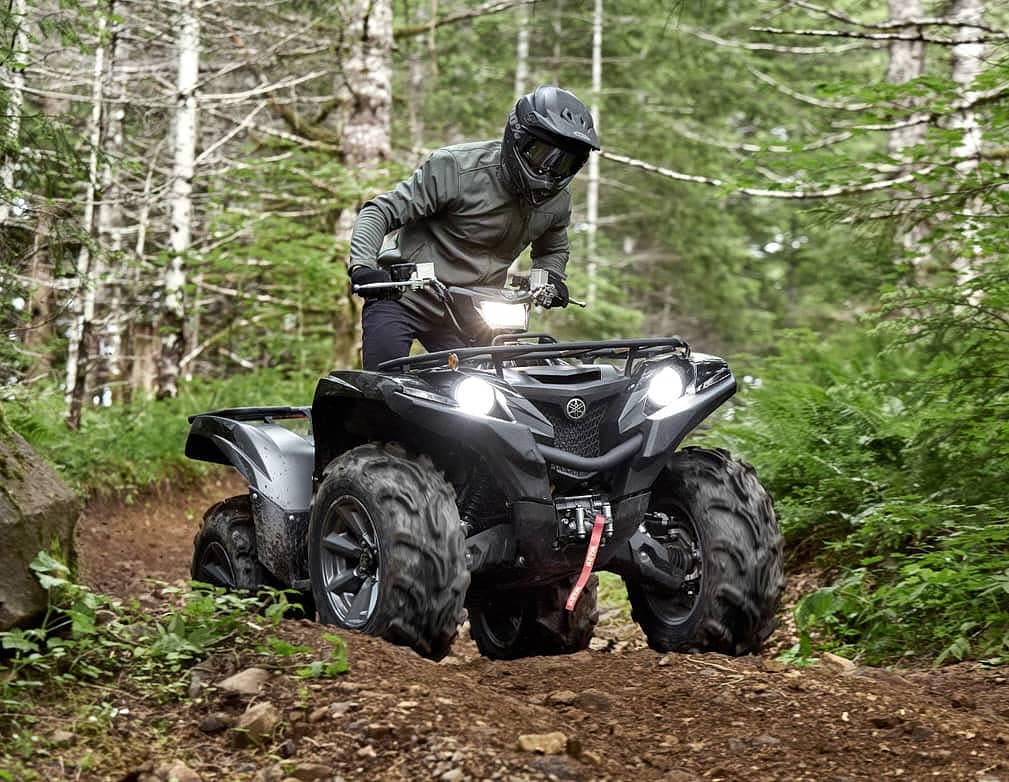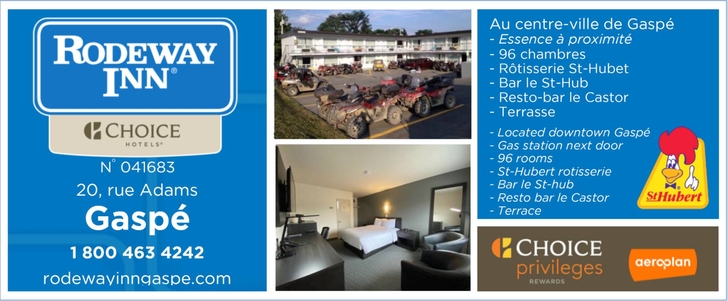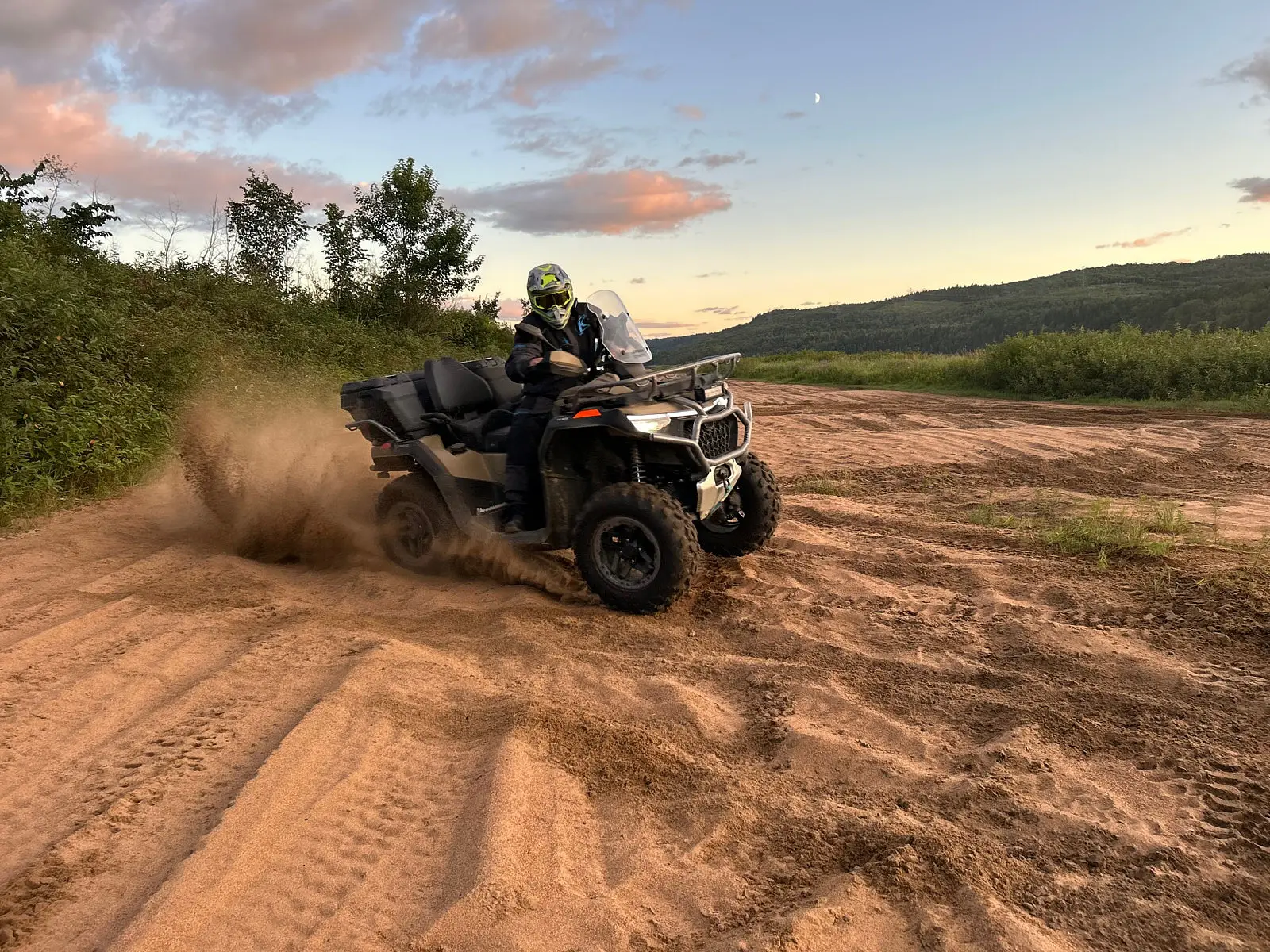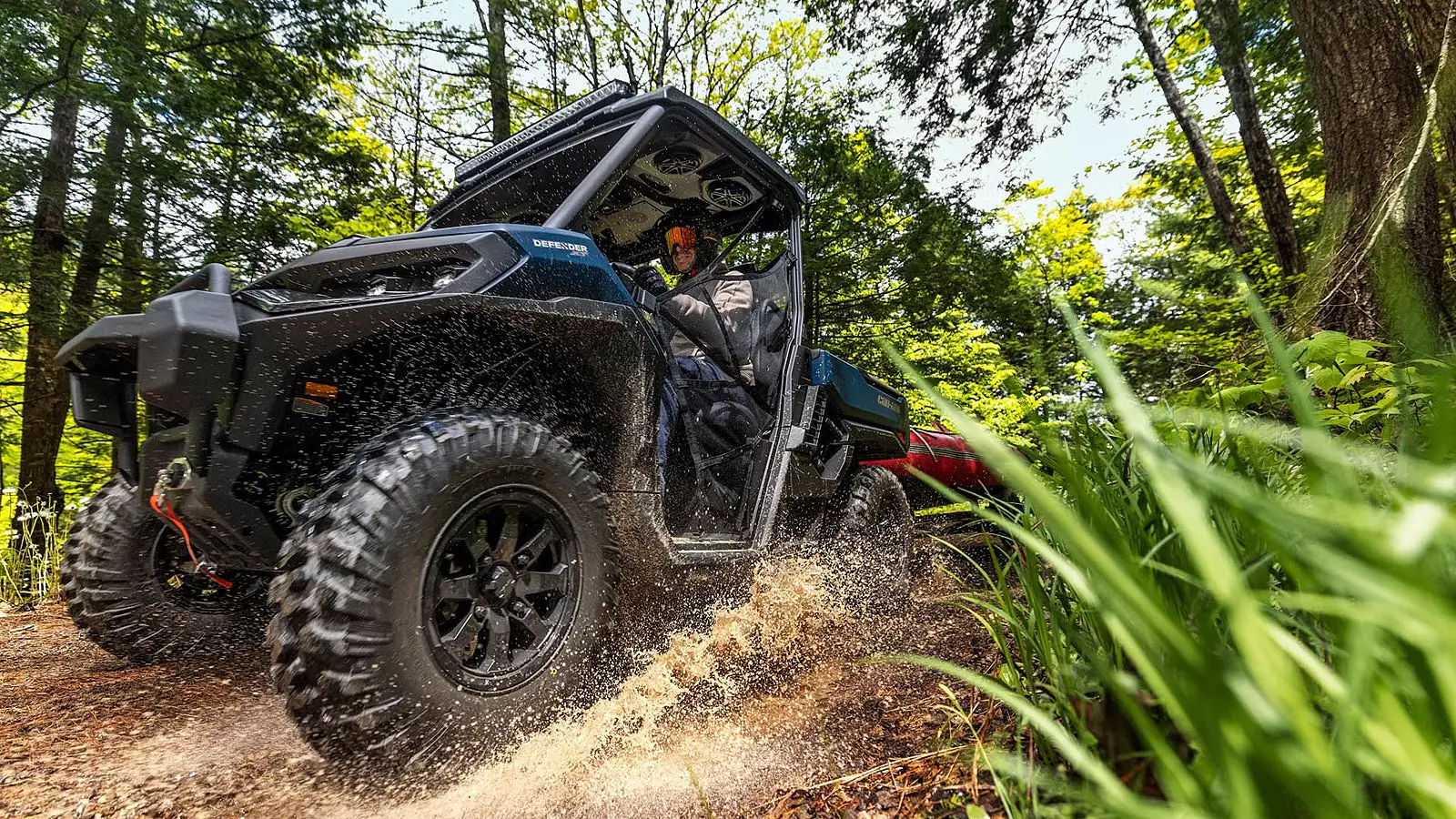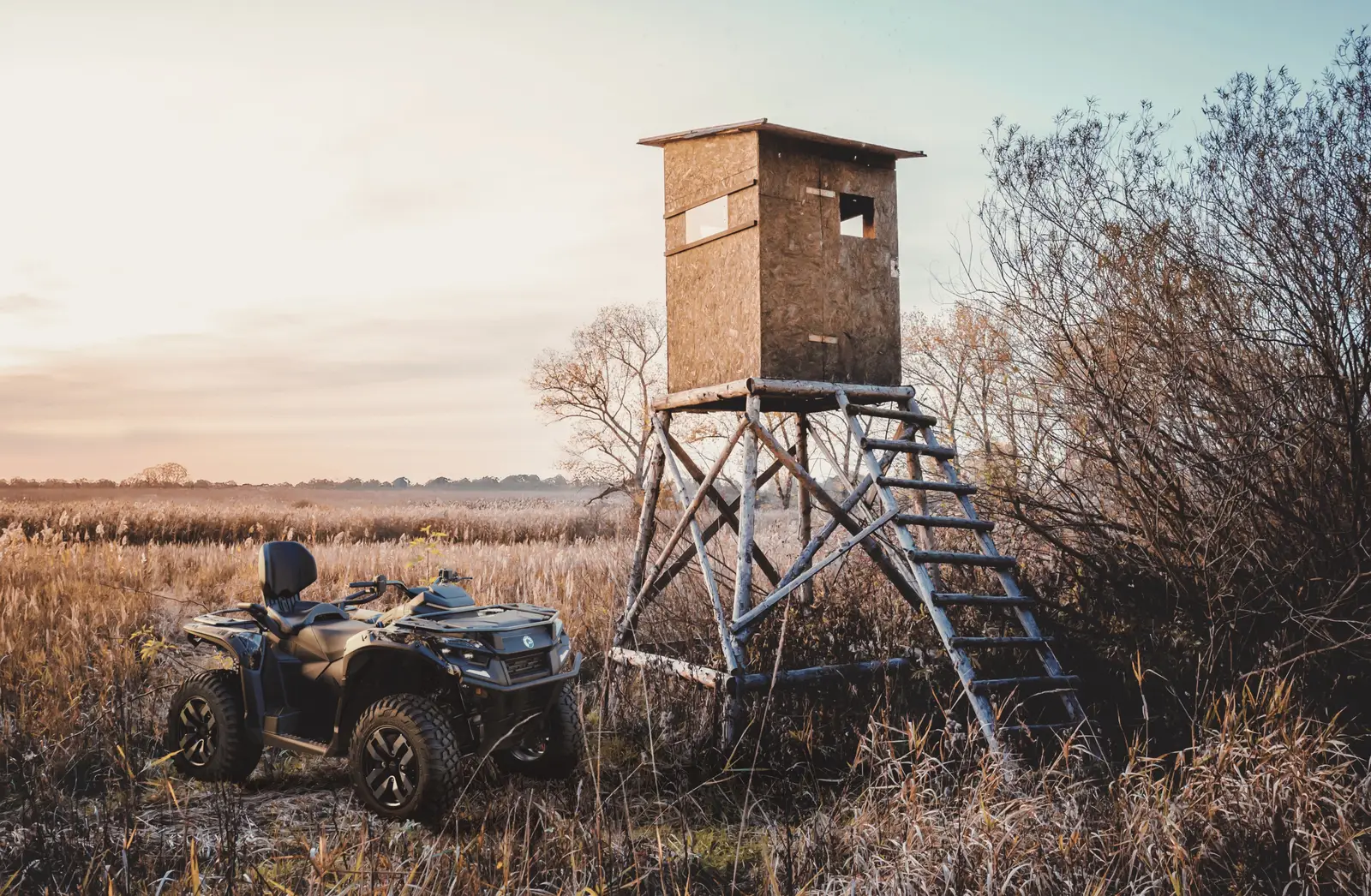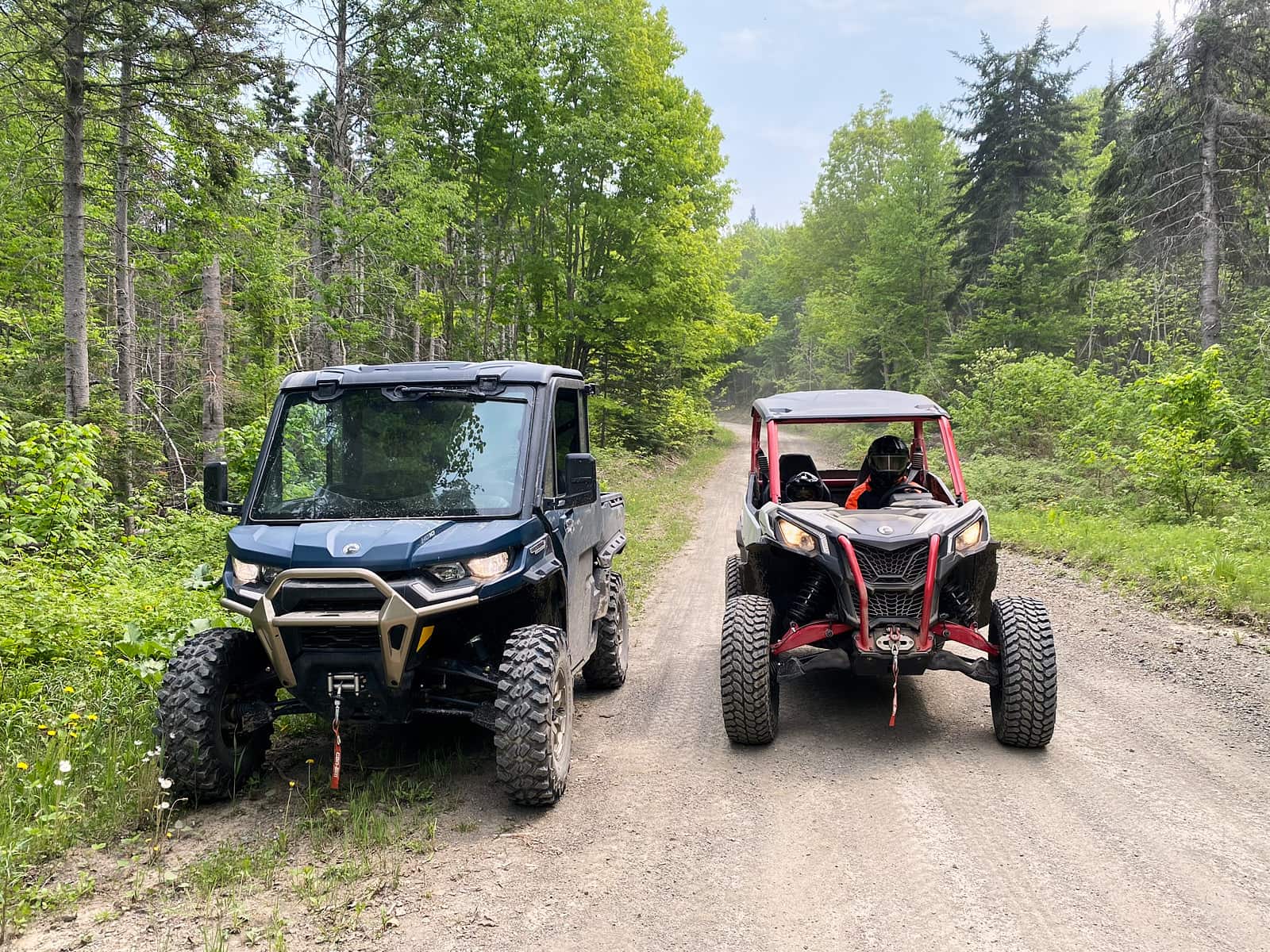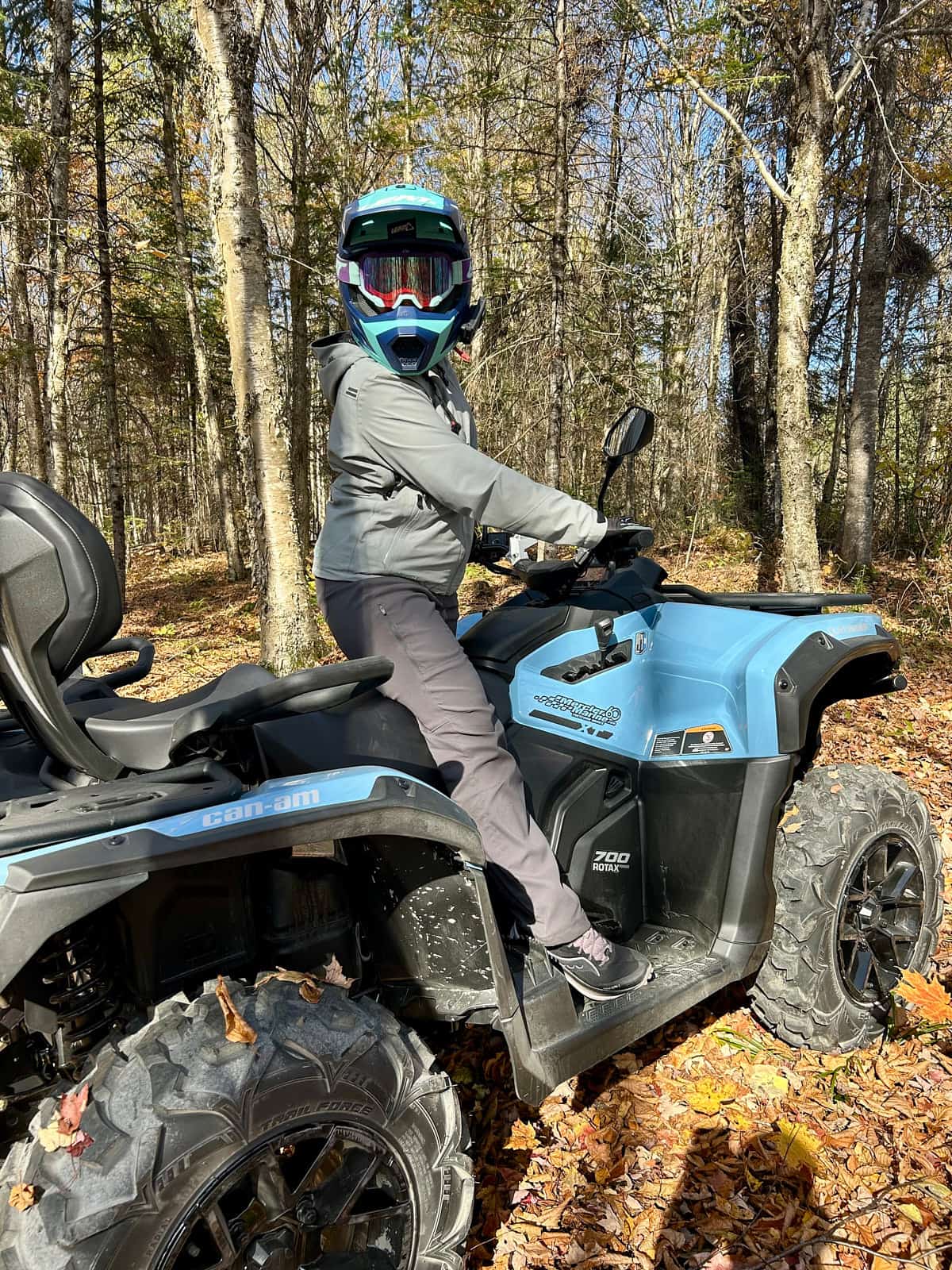Table of contents
Toggle- The Origins of the Grizzly: The Yamaha Big Bear Era
- Grizzly 600: The Rise of Yamaha’s Powerhouse ATV
- The Evolution of the Yamaha Grizzly: Noteworthy Innovations
- Grizzly Chassis and Suspension: Constant Refinement
- Yamaha Grizzly Engines: Simple, Reliable, and Tough
- The Grizzly Family: Models, Versions, and Special Editions
- Why Is the Yamaha Grizzly So Popular?
- Yamaha Grizzly Today (2024–2025)
- Yamaha Grizzly: King of Canadian Trails
- Keep Reading
When talking about iconic ATVs that have shaped the history of quad riding, the name “Yamaha Grizzly” almost always comes up at the top of the list. For more than two decades, this lineup has stood for ruggedness, reliability, and performance—for trail riders and workers alike. But to fully understand the Grizzly’s legacy, we have to go back to its roots: the Yamaha Big Bear.
The Origins of the Grizzly: The Yamaha Big Bear Era
It was in 1987 that Yamaha made waves with the release of the Big Bear 350, a 4 × 4 utility ATV that was ahead of its time. This model quickly became a trusted work and adventure companion thanks to its five-speed manual transmission with automatic clutch, air-cooled single-cylinder engine, and most notably, its all-wheel drive—a rare feature at the time.

In fact, I went on my very first small game hunting rides on a 1988 Big Bear 350. We had a Big Bear at the family cabin and used it extensively, mostly for partridge hunting. The new Yamaha was undeniably more comfortable to ride than the earlier model we had—a 1984 Tri Moto 200 ES that I had been using for the past few years.
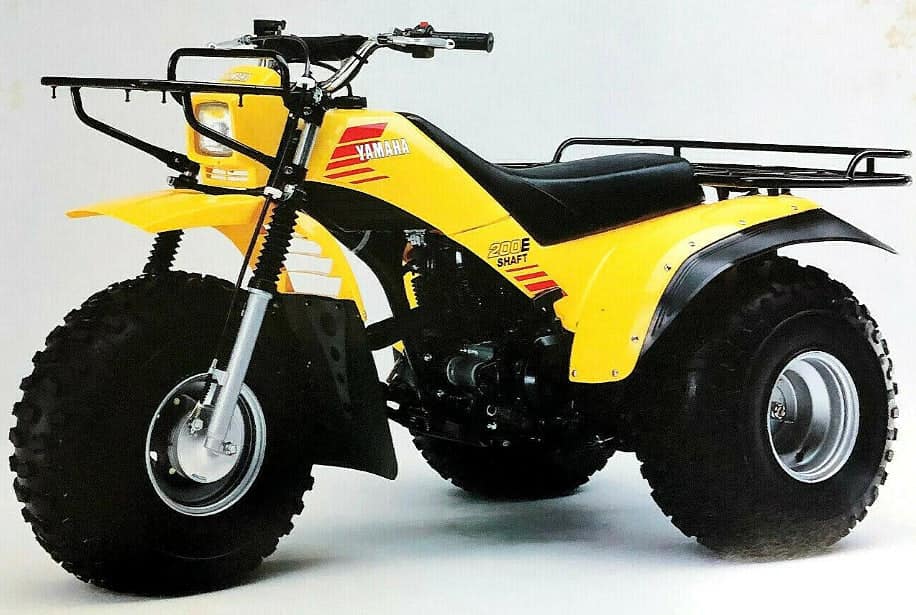
The Big Bear became a benchmark, especially in rural areas of Quebec, Ontario, and the Maritimes, where ATV riders needed machines that could handle woods, muddy fields, or snowy trails. Until the early 2000s, Yamaha developed several versions of this platform: the Big Bear 400, Big Bear IRS, and even a more affordable 2WD version.
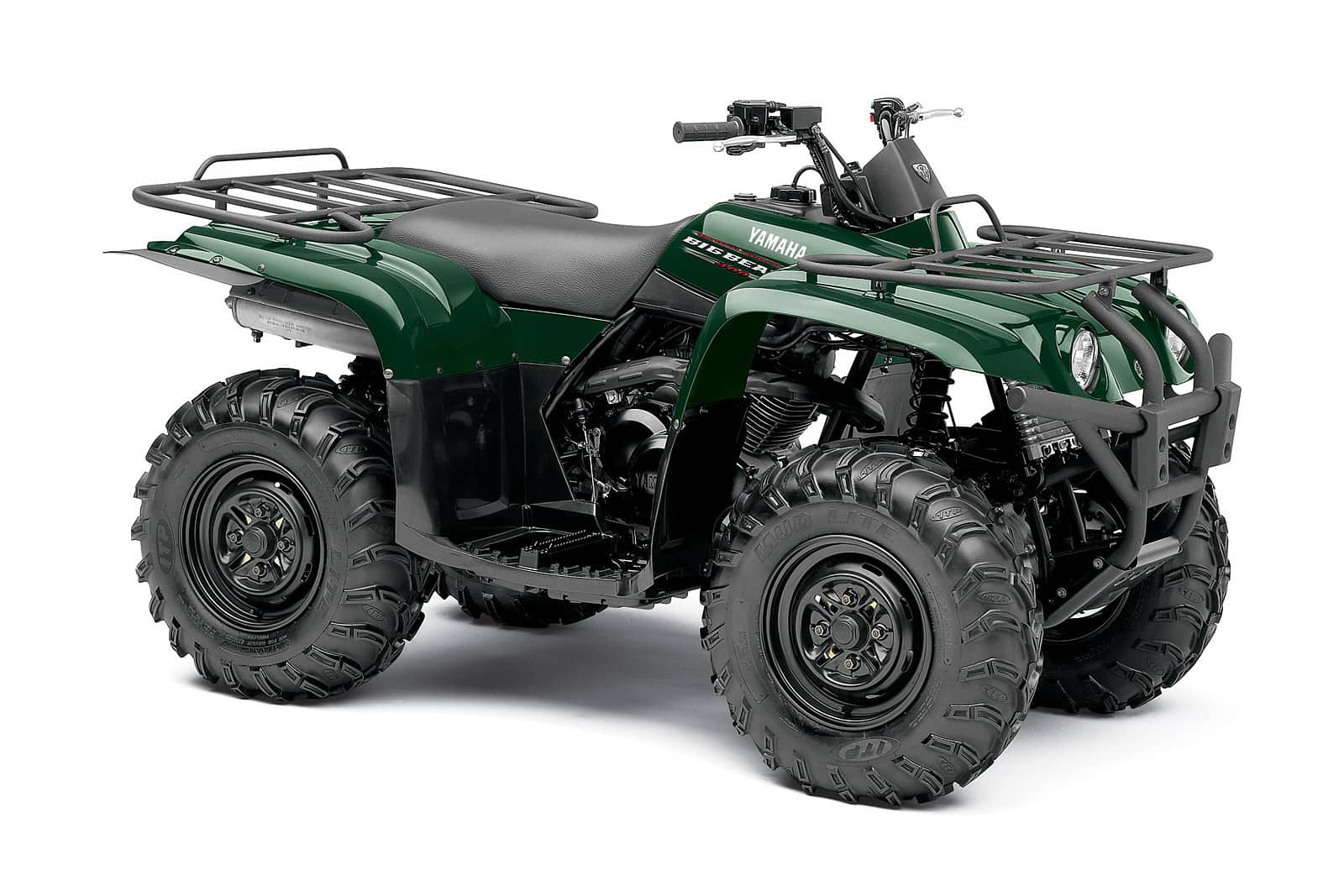
However, as the ATV market became more competitive and users demanded more power, comfort, and technology, Yamaha knew it had to make a bold move—and thus, the Grizzly was born.
Grizzly 600: The Rise of Yamaha’s Powerhouse ATV
Grizzly 600 (1998)
In 1998, Yamaha unveiled the Grizzly 600, a model designed to replace the Big Bear in the premium segment. This vehicle features a 595 cc air-cooled four-stroke single-cylinder engine and an Ultramatic C V T transmission. It was a major technological step forward.
With its reinforced frame, sealed drum brakes, and 2×4/4×4 drivetrain with a locking differential, the Grizzly 600 quickly positioned itself as one of the best utility ATVs on the market.
The Evolution of the Yamaha Grizzly: Noteworthy Innovations
Grizzly 660 (2002)
Released in 2002, the Grizzly 660 marked a major leap forward. Yamaha introduced a more powerful 660 cc liquid-cooled fuel-injected single-cylinder engine. This model also features a redesigned chassis with better weight distribution, upgraded suspension, and new front disc brakes.
The Grizzly 660 gained popularity among hunters, anglers, and forestry workers in Quebec, while also being appreciated by trail-riding enthusiasts for its strong torque and smooth handling.
Grizzly 700 FI (2007)
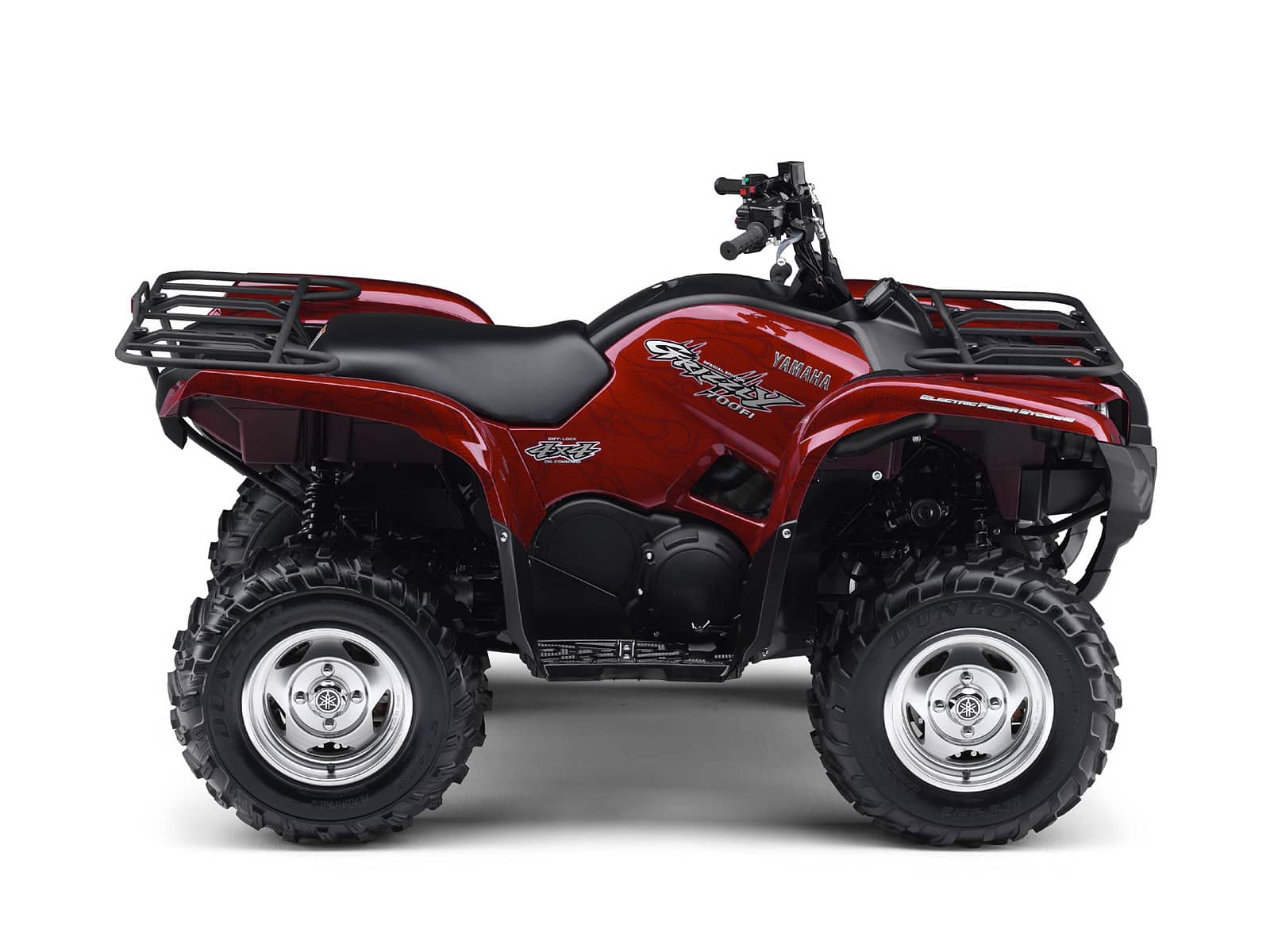
In 2007, Yamaha launched the Grizzly 700 FI (Fuel Injection), which instantly became a class benchmark. It was the first Yamaha ATV equipped with electronic power steering (EPS), a revolutionary technology at the time. This innovation made handling much smoother, especially on technical terrain or during long rides. EPS has now become widespread in the ATV industry.
The engine was upgraded to 686 cc, and the chassis was refined to meet increasing demands for comfort and manoeuvrability. The Ultramatic transmission was optimized to improve engine braking retention—an appreciated feature on steep descents.
Grizzly Chassis and Suspension: Constant Refinement
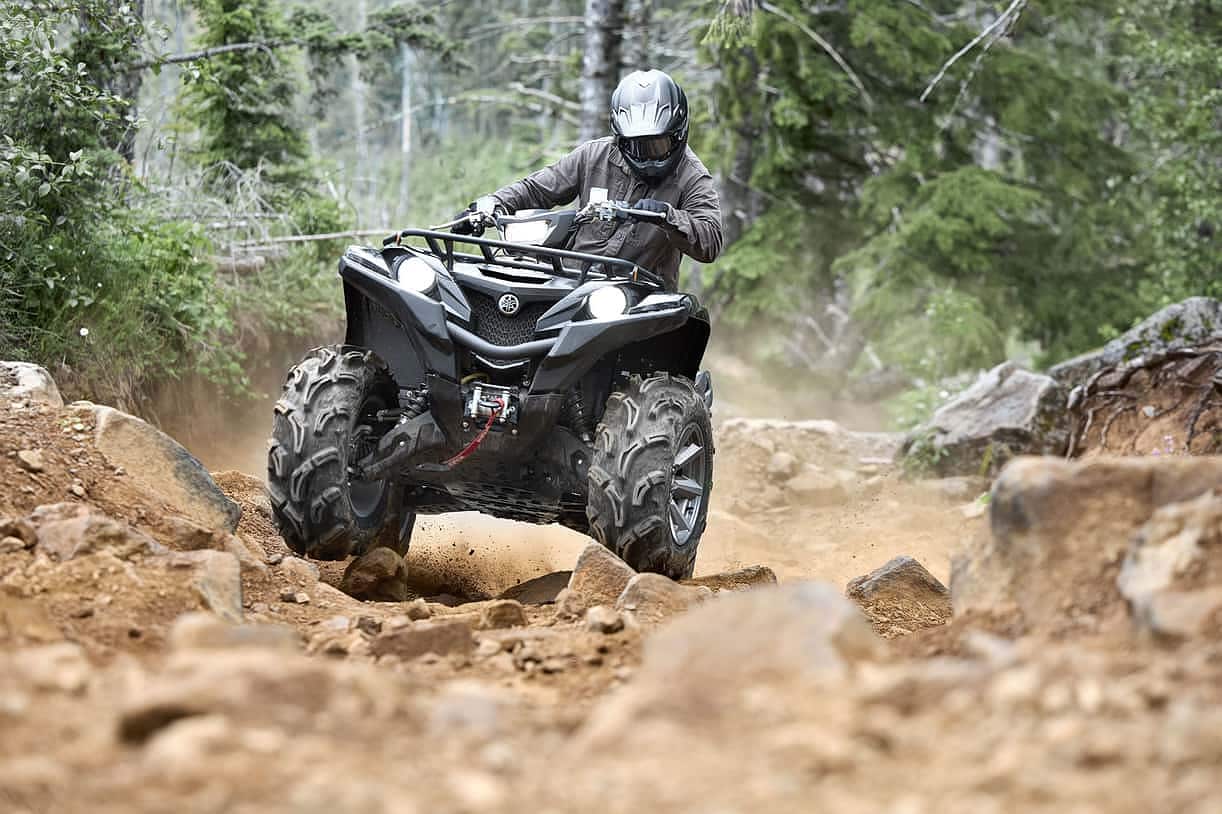
Over the years, Yamaha has continuously evolved the Grizzly’s chassis to meet the needs of demanding users. Key highlights include:
- Independent suspension on all four wheels since the Grizzly 660, with long travel for maximum comfort.
- Introduction of a five-way adjustable suspension to better suit the load weight or trail type.
- A shorter wheelbase than some competitors, giving the Grizzly exceptional agility on tight trails—especially in the dense forests of Bas-Saint-Laurent or Mauricie.
- A lowered centre of gravity that provides excellent stability, even with cargo on the racks.
Yamaha Grizzly Engines: Simple, Reliable, and Tough
Yamaha has always favoured a single-cylinder engine architecture for the Grizzly lineup, unlike some competitors who have opted for twin-cylinder engines.
Why this choice?
- Mechanical simplicity: Fewer moving parts = fewer breakdowns.
- Low-end torque: Ideal for climbing, hauling, and overcoming obstacles.
- Easier maintenance—important for riders far from service centres.
In 2016, Yamaha updated the Grizzly 700 engine, making it more compact and lightweight without sacrificing power. This 686 cc engine remains one of the most reliable on the market today.
The Grizzly Family: Models, Versions, and Special Editions
Over the years, Yamaha has offered several Grizzly variants to better meet customer needs:
- Grizzly EPS: with electronic power steering.
- Grizzly SE (Special Edition) : exclusive colours and finishes, often with premium tires.
- Grizzly Camo: perfect for hunters, with camouflage patterns and sometimes standard accessories (cargo boxes, gun mounts).
- Grizzly without EPS (base models): for purists or those looking to save.
Canadian riders especially appreciate the Maxxis Zilla or Bighorn tires that come standard with certain versions—highly effective in muddy terrain like that of the Laurentians or the Côte-Nord.
Why Is the Yamaha Grizzly So Popular?

Several elements explain the Grizzly family’s legendary status. Here are five that, in my opinion, contributed most to its popularity:
Unmatched Reliability
Owners often report machines with over 10,000 km without major issues.
Low Maintenance
Basic upkeep is all it takes to keep these machines going for years.
High Resale Value
Even after several years, a well-maintained Grizzly remains in high demand on the used market.
Versatility
Whether for hunting, fishing, trail maintenance, or family outings, the Grizzly does it all.
Active Community
Numerous forums, Facebook groups, and ATV clubs are filled with brand enthusiasts sharing tips, mods, and advice.
Yamaha Grizzly Today (2024–2025)
The Grizzly 700 EPS 2025 continues in the footsteps of its predecessors, offering:
- A modernized design with LED lighting.
- A full digital dashboard.
- 1,325 lb towing capacity.
- The same trusted, fuel-efficient engine.
Yamaha focuses on continuous improvement rather than a full redesign. And it seems to be working: Grizzly sales remain strong in Canada, especially in Quebec, where it’s one of the most common models on federated trails.
Yamaha Grizzly: King of Canadian Trails
With over 25 years of history, the Yamaha Grizzly has built a reputation for excellence. By combining power, agility, comfort, and durability, it has evolved with the times while preserving the core trait that made it great: reliability.
From the Big Bear 350 to the 2025 Grizzly 700 EPS, Yamaha has listened to its customers and delivered ATVs ready to meet any terrain challenge. One thing’s for sure—the Grizzly family will keep evolving in the years to come, always ready to conquer the trail.

